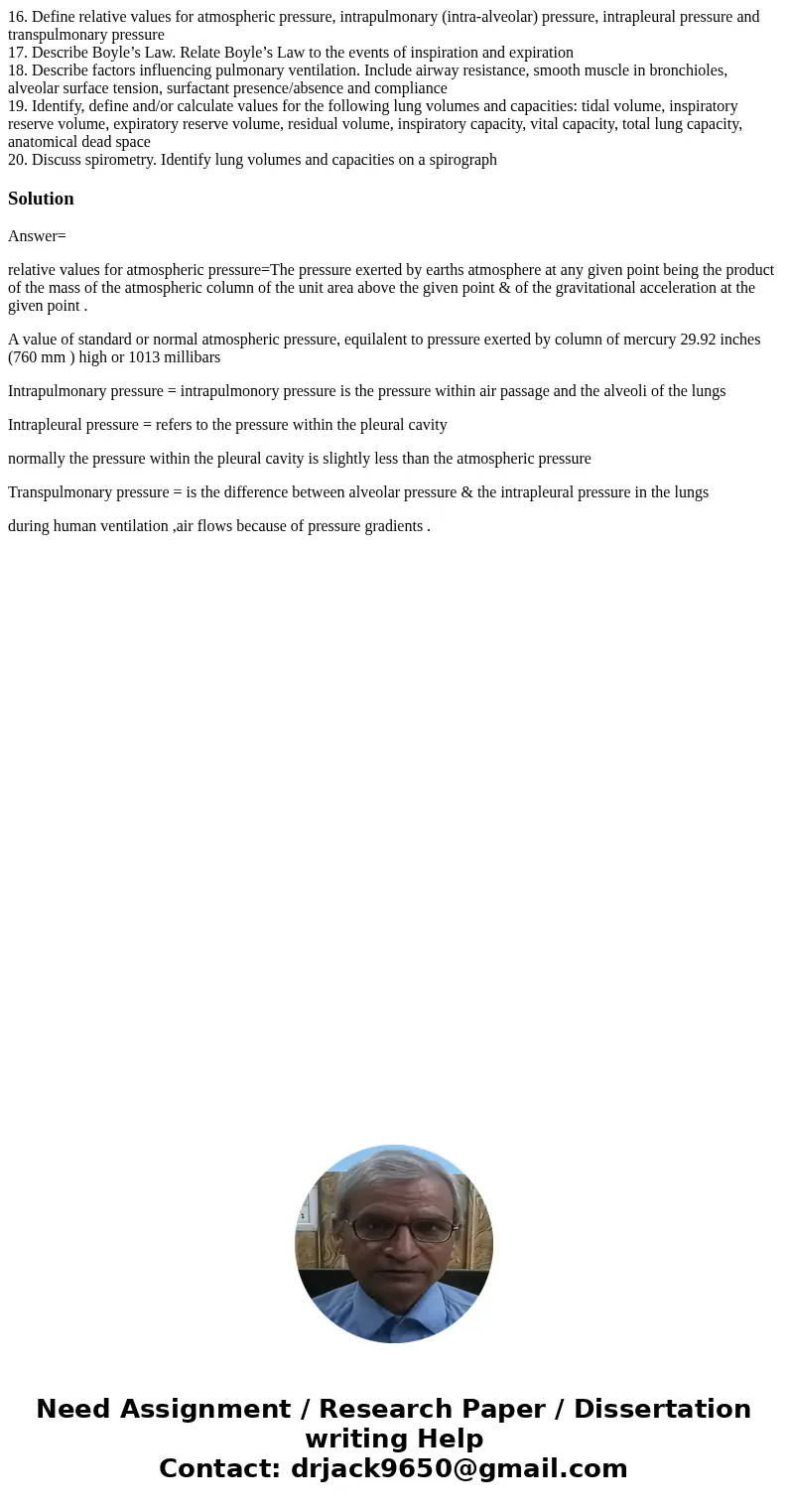16 Define relative values for atmospheric pressure intrapulm
16. Define relative values for atmospheric pressure, intrapulmonary (intra-alveolar) pressure, intrapleural pressure and transpulmonary pressure
17. Describe Boyle’s Law. Relate Boyle’s Law to the events of inspiration and expiration
18. Describe factors influencing pulmonary ventilation. Include airway resistance, smooth muscle in bronchioles, alveolar surface tension, surfactant presence/absence and compliance
19. Identify, define and/or calculate values for the following lung volumes and capacities: tidal volume, inspiratory reserve volume, expiratory reserve volume, residual volume, inspiratory capacity, vital capacity, total lung capacity, anatomical dead space
20. Discuss spirometry. Identify lung volumes and capacities on a spirograph
Solution
Answer=
relative values for atmospheric pressure=The pressure exerted by earths atmosphere at any given point being the product of the mass of the atmospheric column of the unit area above the given point & of the gravitational acceleration at the given point .
A value of standard or normal atmospheric pressure, equilalent to pressure exerted by column of mercury 29.92 inches (760 mm ) high or 1013 millibars
Intrapulmonary pressure = intrapulmonory pressure is the pressure within air passage and the alveoli of the lungs
Intrapleural pressure = refers to the pressure within the pleural cavity
normally the pressure within the pleural cavity is slightly less than the atmospheric pressure
Transpulmonary pressure = is the difference between alveolar pressure & the intrapleural pressure in the lungs
during human ventilation ,air flows because of pressure gradients .

 Homework Sourse
Homework Sourse